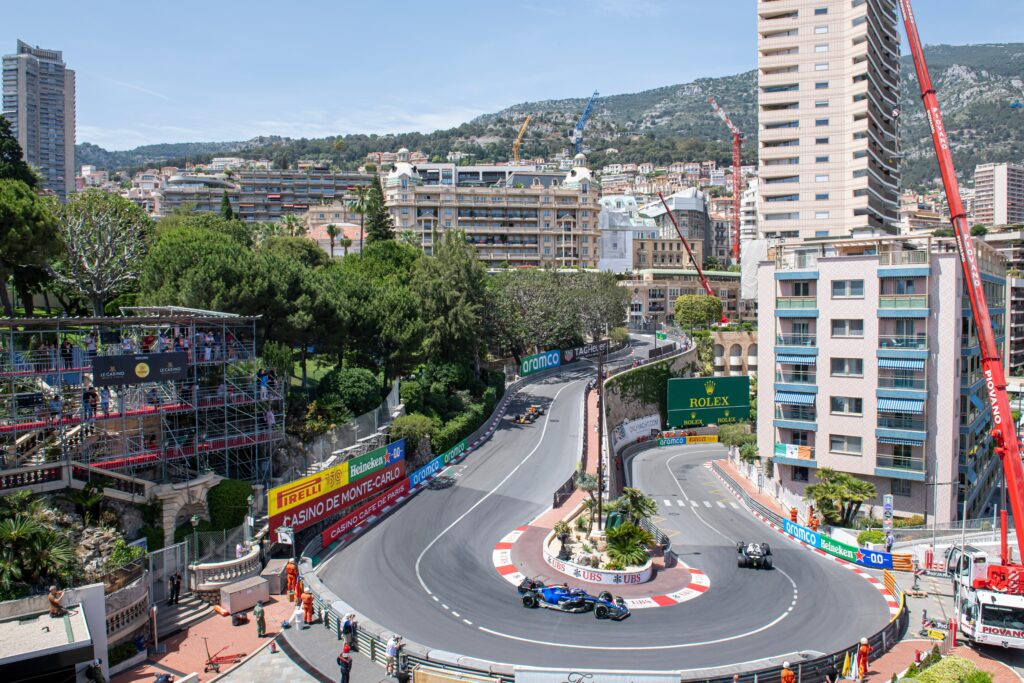The Monaco Grand Prix, once the most glamorous and exciting race in Formula 1, has become one of the slowest and most boring events of the season. The narrow streets of Monte Carlo, beautiful as they are, leave no room for action. Overtaking is nearly impossible, and last year’s race proved that point painfully well.
Now, Formula 1 is trying something new to bring the thrill back. In a bold move, the sport will require drivers to use three different tyre types during the race. This change forces every driver to make at least two pit stops, which could shake up strategies and create more movement on the grid—even if it won’t magically solve the overtaking problem.
A Historic Race Losing Its Shine
Monaco is a place where history, money, and speed meet. But over the years, the actual racing has gotten worse. Today’s Formula 1 cars are two meters wide and heavier than ever, which makes passing nearly impossible on these tight roads.
Last year’s Monaco Grand Prix turned into a long, slow parade. A red flag early in the race allowed every driver to change tyres without making a proper pit stop. What followed was a 77-lap processional with zero changes in the top 10. Fans were frustrated. Even drivers were unimpressed.
“We were going slower than Formula 2,” said Oscar Piastri of McLaren. That quote summed up the race for many.
Forced Pit Stops Bring Strategic Drama
This year, Formula 1 hopes to avoid another dull day by forcing two pit stops per driver, thanks to the new three-tyre-compound rule. This is a rare change in the sport, and Monaco is the perfect place to test it. If drivers can’t pass each other on the track, perhaps they can do it through pit stop timing, tyre choice, and bold strategy.
Still, expectations are low. “You need to be 4.5 seconds per lap faster just to have a 50% chance to pass,” said George Russell of Mercedes. That means most battles will still be won or lost in the pits, not on the track.
But there is some hope. Tyre wear and timing could create tension. Safety cars or weather could throw plans into chaos. And that unpredictability could at least make Monaco more watchable.
Verstappen Cautiously Optimistic
Max Verstappen, the reigning world champion and one of the most dominant drivers in recent memory, admitted the rule change is a step in the right direction—even if it won’t fix everything.
“It could be straightforward or go completely crazy—at least we’re trying something,” he said. That cautious optimism reflects the paddock’s mood: no one expects a miracle, but they welcome the effort.
However, the plan isn’t foolproof. If a red flag is waved during the race, drivers can still change tyres without visiting the pit lane. That could undermine the whole idea and may lead to more calls for a rule tweak to stop red-flag tyre swaps from affecting strategy.
Ferrari Leads Practice as Verstappen Struggles
If Friday’s practice sessions are any sign, this year’s Monaco Grand Prix may have a surprise in store. Charles Leclerc, racing on his home streets, topped both sessions for Ferrari. Despite damaging his front wing in a clash with Lance Stroll—who later got a penalty—Leclerc looked sharp and focused.
Ferrari’s strong pace in the slow-speed corners caught many by surprise. The team’s car has not always been kind to bumpy tracks or tight layouts, but in Monaco, it seems to be working well.
Behind Leclerc, McLaren drivers Oscar Piastri and Lando Norris also looked fast. The young pair have been improving all season, and Monaco might offer them a shot at a podium if things go their way.
Meanwhile, Verstappen struggled for grip. He finished only 10th in the second session, raising questions about how well Red Bull will perform on this type of circuit. The Dutch driver has had dominant races this year, but Monaco is a different beast.
A Pole Could Be a Win in Monaco
In Monaco, track position is everything. The tight streets and lack of passing mean the driver who starts at the front has a big advantage. That’s why qualifying is often the most exciting part of the weekend.
If Leclerc secures pole position again—and manages to avoid bad luck—he could finally win his home race. Despite strong performances in the past, he has never won in Monaco. This year might be his best chance yet.
The Monaco Grand Prix will always be special, but Formula 1 knows it needs to change to stay exciting. This year’s tyre rule is just a first step, and fans will be watching closely to see how it plays out.
Even if overtaking remains rare, smart pit stops, bold strategy, and a touch of chaos could turn Monaco into a thrilling race once again.


